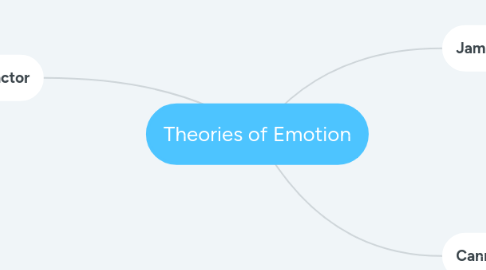
1. Two-Factor
1.1. Stanley Schacter & Jerome Singer
1.1.1. thought James-Lange and Cannon-Bard models were too similar
1.1.1.1. agreed with James and Lange that our thoughts of our bodily reactions play an important role in emotions, but disagreed with James and Lange that these bodily reactions are necessary for emotion
1.2. theory proposing that emotions are produced by an undifferentiated state of arousal along with an explanation of that arousal
1.3. two psychological events required to produce an emotion
1.3.1. 1. After an emotional event, we experience a state of alertness.
1.3.2. 2. We try to explain the source and once we find it, we experience an emotion. The arousal is then labeled with an emotions which occurs in a rapid process.
2. James-Lange
2.1. Williams James & Carl Lange
2.1.1. different versions of theory, but classified together
2.2. oldest cognitive theory of emotion
2.3. theory proposing that emotions result from our interpretations of our bodily reactions to stimuli
2.3.1. observe our physiological & behavioral reactions to a stimulus
2.4. influences modern-day thinking
2.4.1. somatic marker theory
2.4.1.1. theory proposing that we use our “gut reactions” to help us determine how we should act
3. Cannon-Bard
3.1. Walter Cannon & Philip Bard
3.1.1. pointed out flaws in James and Lange's reasoning

